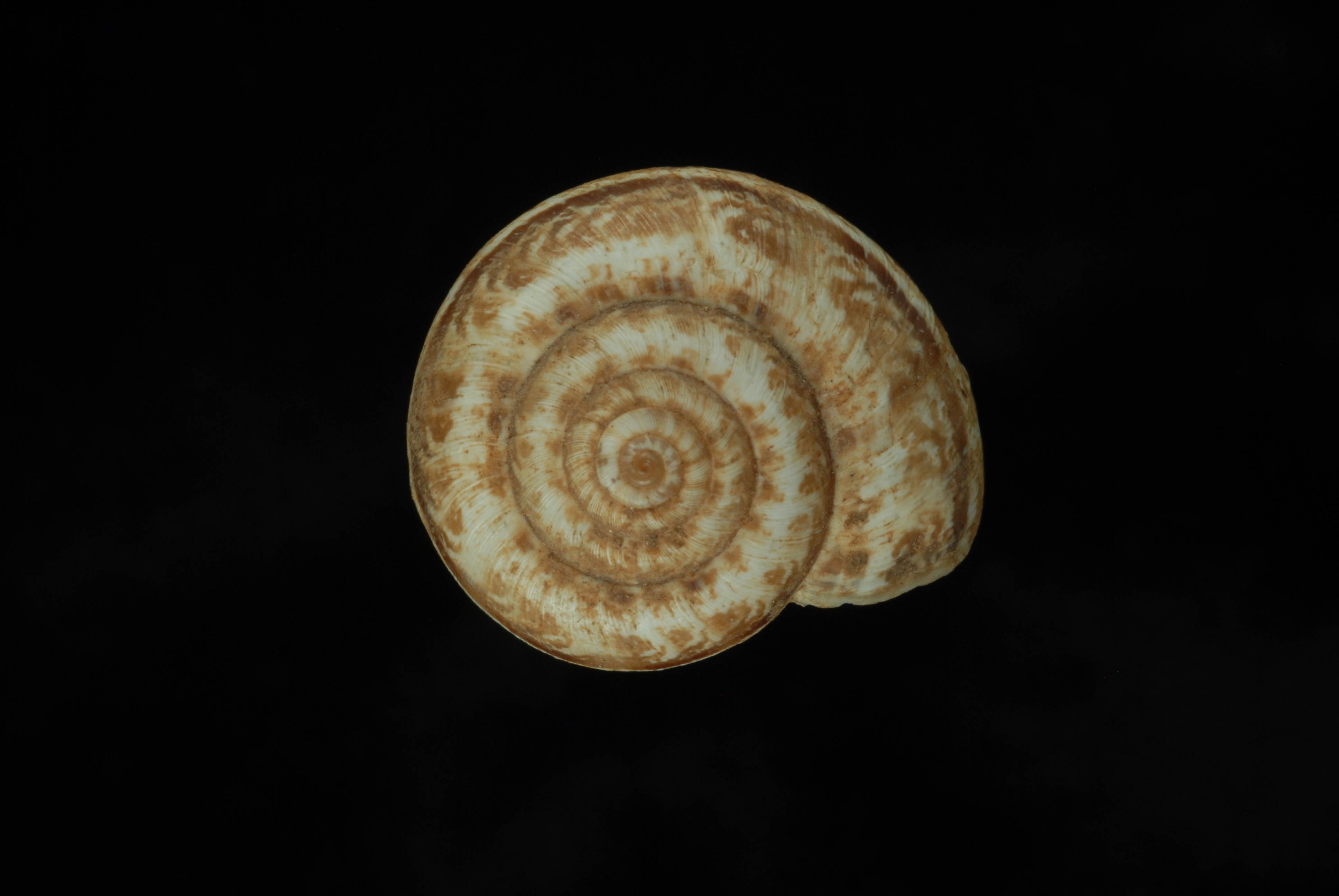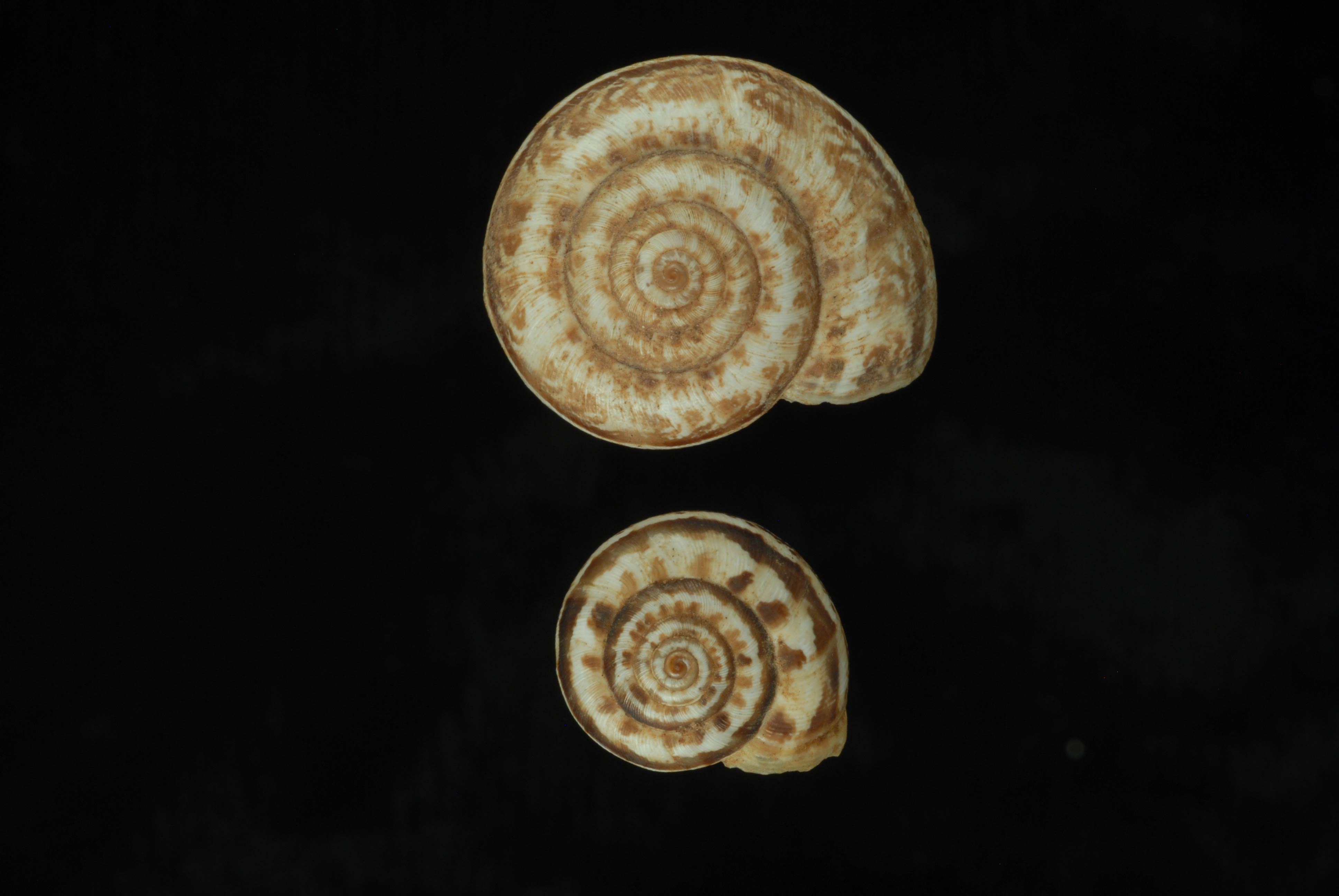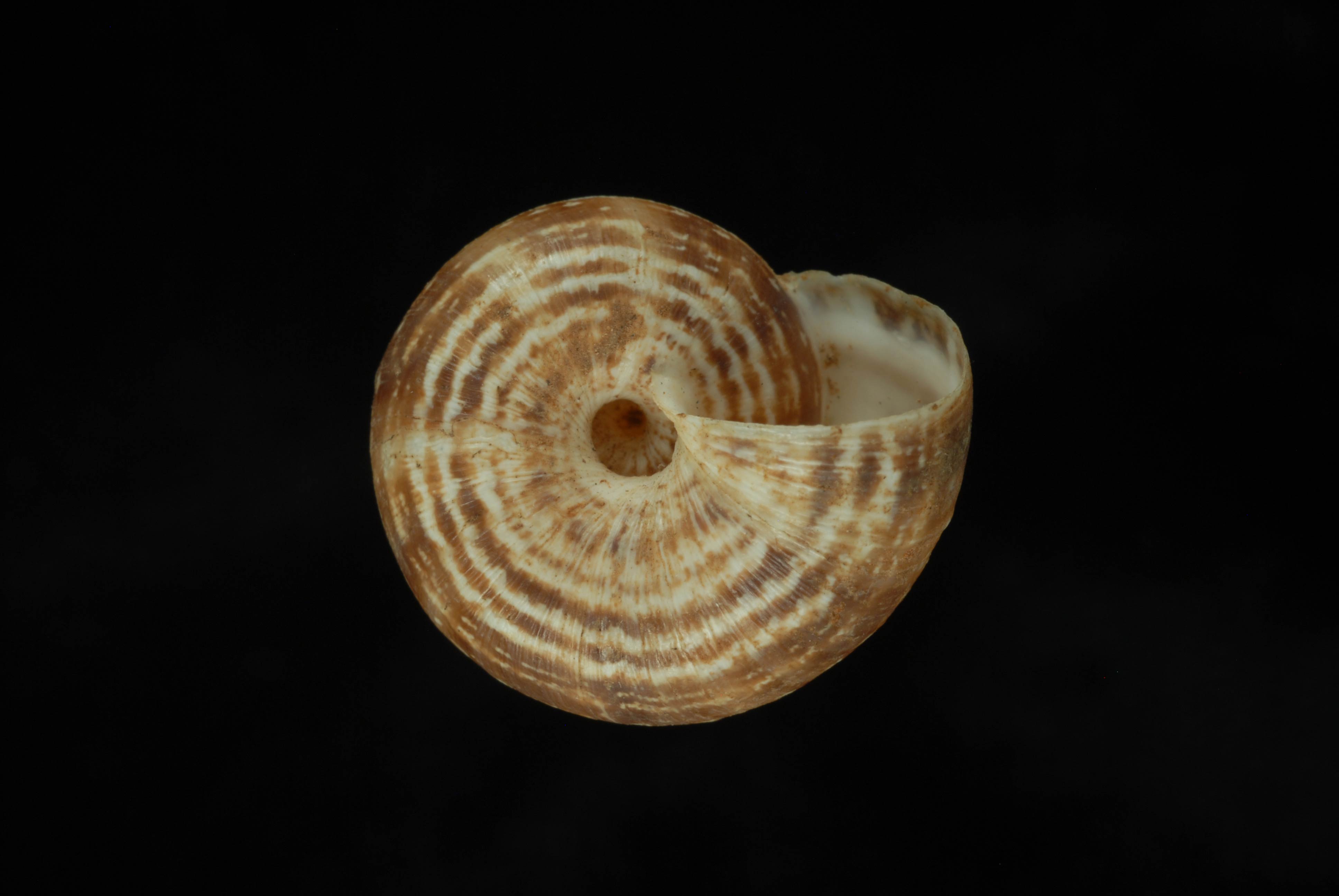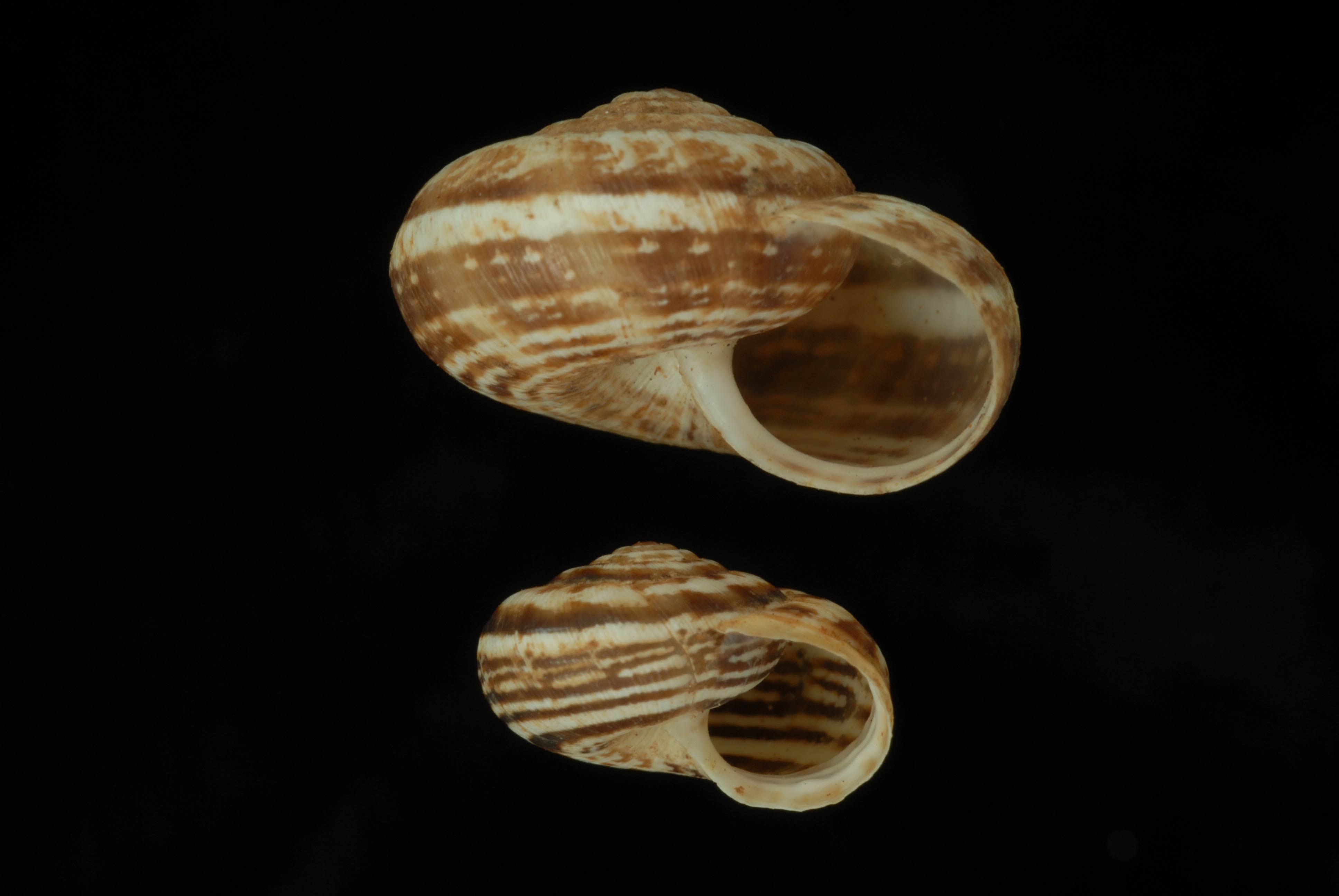Xeropicta krynickii
|
Xeropicta krynickii. (Photo: © L. Buss, University of Florida) |
|
Xeropicta krynickii. (Photo: © L. Buss, University of Florida) |
|
Xeropicta krynickii. (Photo: © L. Buss, University of Florida) |
|
Xeropicta krynickii. (Photo: © L. Buss, University of Florida) |
Family
Hygromidae
Species
Xeropicta krynickii (Krynicki, 1833)
Common name
Desert snail
Description
This species has a shellShell:
A hard, inflexible, calcareous or chitinous structure that vary in size and may either completely encasing the animal, covering some part of it or be internal.
diameter of 12-18 mm, with 5-6 whorlsWhorls:
Pleural of whorl. A whorl is a complete spiral turn/growth of the shell of a mollusc. The whorls are counted from the apex outwards.
. The shellShell:
A hard, inflexible, calcareous or chitinous structure that vary in size and may either completely encasing the animal, covering some part of it or be internal.
has a white baseBase:
This is the lower or underside of the shell; opposite of apical.
color with varying shades of brown spots and bands. This glossy shellShell:
A hard, inflexible, calcareous or chitinous structure that vary in size and may either completely encasing the animal, covering some part of it or be internal.
has uneven sculpturing and an open umbilicusUmbilicus:
A navel-like indentation or depression in the center of the shell. It may be described as open (inside of columella visible), partially closed (partly covered by base of aperture) or completely closed (not visible). The width of the umbilicus is a measure of its greatest diameter.
(navel).
Native range
Mediterranean region
Distribution
Middle East: Turkey to Jordon, Egypt, Israel
Ecology
This species prefers open habits, with little vegetation (e.g., gardens, road medians). Xeropicta krynickii may occur in vineyards and orchards where it will cause damage to the crop. This species is often inadvertently harvested with agricultural produce and is generally considered a contaminant pest. In Israel, this species often invades ornamental cropping systems in search of a place to aestivate. Shipments of these ornamental plants are often rejected by trading partners due to contamination by this species.
Synonyms
- Xeropicta vestalis (Pfeiffer, 1841)
- Helix vestalis Pfeiffer, 1841
References
Abbott 1989Abbott 1989:
Abbott, R.T. 1989. Compendium of landshells. A full-color guide to more than 2,000 of the World’s terrestrial shells. American Malacologists, Inc., Melbourne, FL and Burlington, MA. pp. 240.; Cowie et al. 2009; Kostyukovsky and Shaaya 2001Kostyukovsky and Shaaya 2001:
Kostyukovsky, M. and E. Shaaya. 2001. Quarantine treatment on cut flowers by natural fumigants. Donahaye, E.J., Navarro, S. And Leesch J.G. [Eds.] (2001) Proc. Int. Conf. Controlled Atmosphere and Fumigation in Stored Products, Fresno, CA. 29 Oct. - 3 Nov. 2000, Executive Printing Services,Clovis, CA, U.S.A. pp. 821-827; Moran et al. 2004Moran et al. 2004:
Moran, S., Y. Gotlib and B. Yaakov. 2004. Management of land snails in cut green ornamentals by copper hydroxide formulations. Crop Protection 23(7): 647-650.





